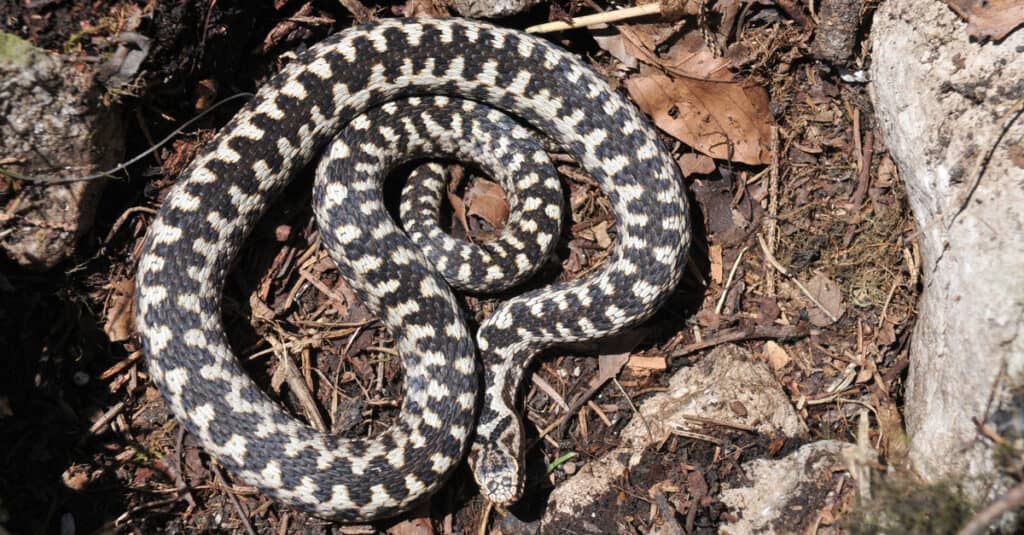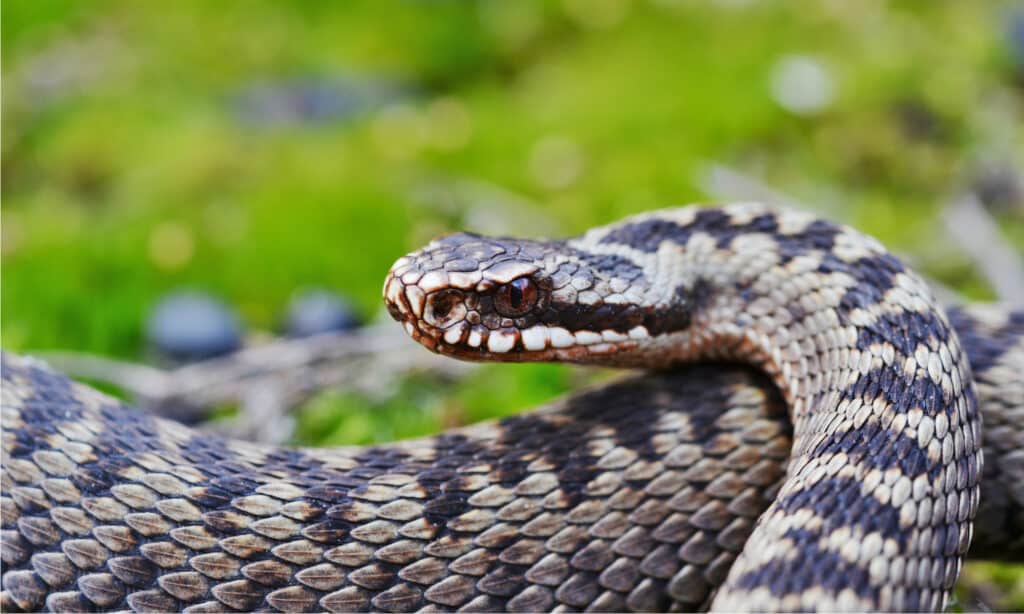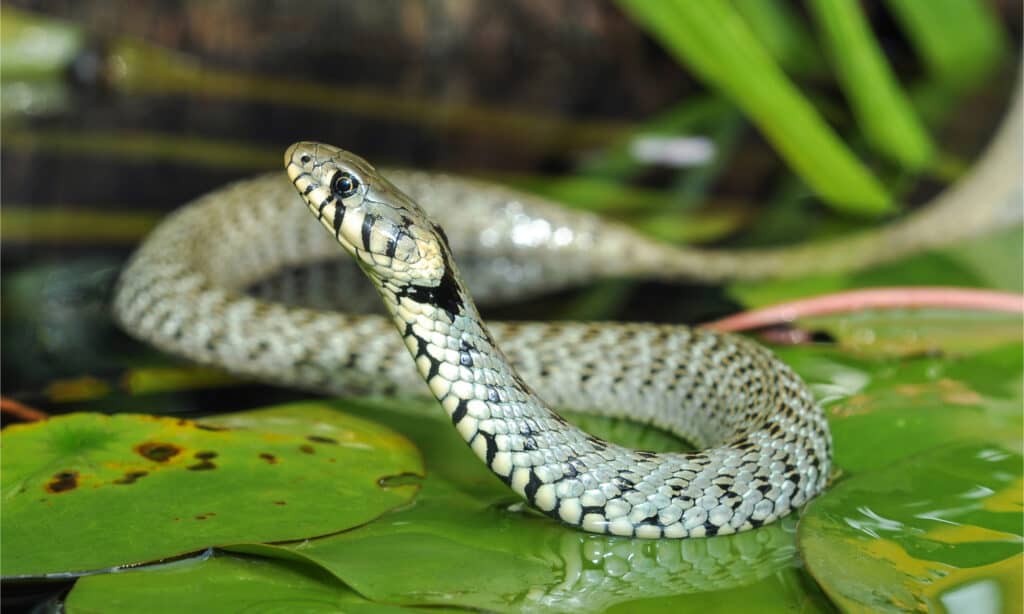Key Points:
- Snakes are cold-blooded reptiles that require sunlight to regulate their body temperatures.
- The snake species found the most northernly is the Common European Adder, found in the Arctic Circle.
- European adders are able to survive the extreme cold through hibernation.
As reptiles, snakes are cold-blooded, meaning their body temperature depends on the environment around them. Relying on their surroundings to warm them, it is no surprise that most snakes are found in warm and hot climates with a lot of sun or humidity to help regulate their internal temperatures from the inside out.
For a long time, it was considered that snakes were only found in warm places or at least with access to warmth. Still, there are occasionally members of any animal species that have carved out a niche for themselves by adapting to some of the harshest places on earth. Let’s discover the venomous arctic snake that can survive the cold.
What kind of snake lives north of the Arctic Circle?

European adders are the only snakes found north of the Arctic Circle.
©/Shutterstock.com
Common European adders are the most northerly snakes in the world. They have been documented in places where no other snakes live, including being found north of the Arctic Circle.
There aren’t many snakes that can tolerate the cold. Even though snakes are some of the hardiest creatures, they aren’t well adapted to cold environments. This is primarily because they are cold-blooded animals, meaning they regulate their internal temperature through the world around them. For a warm-blooded human, a good meal and some clothes are enough to keep our internal temperature where it should be. For cold-blooded animals, however, cold environments make it nearly impossible ever to keep their body temperature steady.
Even with all the evolutionary cards stacked against them, European adders can carve out a niche across the continent! They make their homes in some “snake-hostile” places, making them one of nature’s great survivors. Let’s take a look at how they can do this, plus learn a little more about these venomous arctic snakes!
How does the European adder survive the extreme cold?

European adders survive the cold by hibernating deep in the earth with other snakes to keep warm.
©/Shutterstock.com
There are two primary ways that the European adder can survive the frigid temps: hibernation and group energy conservation. Let’s learn a bit about these.
Hibernation is a practice that many animals across the world utilize to survive extreme weather conditions. Bears, prairie dogs, and many more animals will head underground during the winter. During this time, they reduce their body’s metabolic rate to use less energy. The effect is a reduced heart rate, reduced breathing, and little to no digestion.
European adders are able to use this tactic to survive in the cold. Their goal is to get below the frost line in the ground where the temperature stays above freezing. Most European adders use old mammal burrows or crayfish holes to get as deep as possible. These special burrows are known as hibernacula.
Once an adder has found a hibernaculum, the next step is to get as many snakes in there as can fit! Just like humans can congregate in order to warm each other up, snakes can do something similar. There have been reports of some hibernaculum containing over 100 snakes.
Where does the European adder live?

European adders can be found across the European continent and far north into Siberia.
©Holm94/Shutterstock.com
European adders are the most northerly snakes in the world. They can be found across most of the European continent, from Great Britain all the way east into Russia. Their most southerly range extends into Greece. Their most northerly ranges include Norway, Finland, and Russia.
In warmer climates, the hibernation periods for the adder are either reduced or nonexistent. In Great Britain, for example, they hibernate up to 180 days of the year. In colder places like Sweden, they are known to hibernate for up to nine months out of the year.
Are European adders dangerous?
As their name would suggest, European vipers are members of the Vipera genus and are venomous. When compared to other snakes, however, they aren’t particularly dangerous to humans. Their bites are somewhat common as they are so widely distributed, but most of the time, they are the result of a human reaching into their resting place without knowing they are there.
A bite is dangerous enough that you should seek medical treatment, but people rarely, if ever, die from it. Victims say that the bites are incredibly painful but aren’t a threat for most adults. There have only been 14 known deaths since 1876 in Britain. For reference, there are thousands of bites each year across the continent.
What does the European adder look like?

Melanistic (dark-colored) adders exist too.
©Edwin Godinho/Shutterstock.com
Since these snakes are so widely distributed, they tend to vary in appearance based on location. Still, they are generally recognized as thicker snakes, with most adults reaching 24 inches long at a maximum. They can be light brown or gray, but other individuals can be almost totally black. Generally, the best way to identify a European adder is their zigzag pattern down their spine and V or X-shaped pattern on their heads.
What other snake can live in the extreme cold?
There are some snakes that are known to tolerate cold temperatures. Here are a few:

Grass snakes can also hibernate during the winter.
©Dr.Pixel/Shutterstock.com
Natrix natrix (Grass Snake)
These snakes inhabit a similar range to the European adder, albeit a little more centralized and less northern. Grass snakes are also found in Africa and the Middle East. Like European adders, grass snakes hibernate during the cold winter months.
Coronella austriaca (Smooth Snake)
Smooth snakes are also native to Europe. They can be found in northern and central Europe but can also be seen to the east in Iran.
Gloydius himalayanus (Himalayan Pit Viper)
As their name would suggest, Himalayan pit vipers are native to the Himalayas, mainly Pakistan, India, and Nepal. They favor mountain slopes and hold the record for the highest elevation that a snake has ever been seen at (4877 meters high).
The photo featured at the top of this post is ©
Discover the "Monster" Snake 5X Bigger than an Anaconda
Every day A-Z Animals sends out some of the most incredible facts in the world from our free newsletter. Want to discover the 10 most beautiful snakes in the world, a "snake island" where you're never more than 3 feet from danger, or a "monster" snake 5X larger than an anaconda? Then sign up right now and you'll start receiving our daily newsletter absolutely free.
Thank you for reading! Have some feedback for us? Contact the AZ Animals editorial team.






